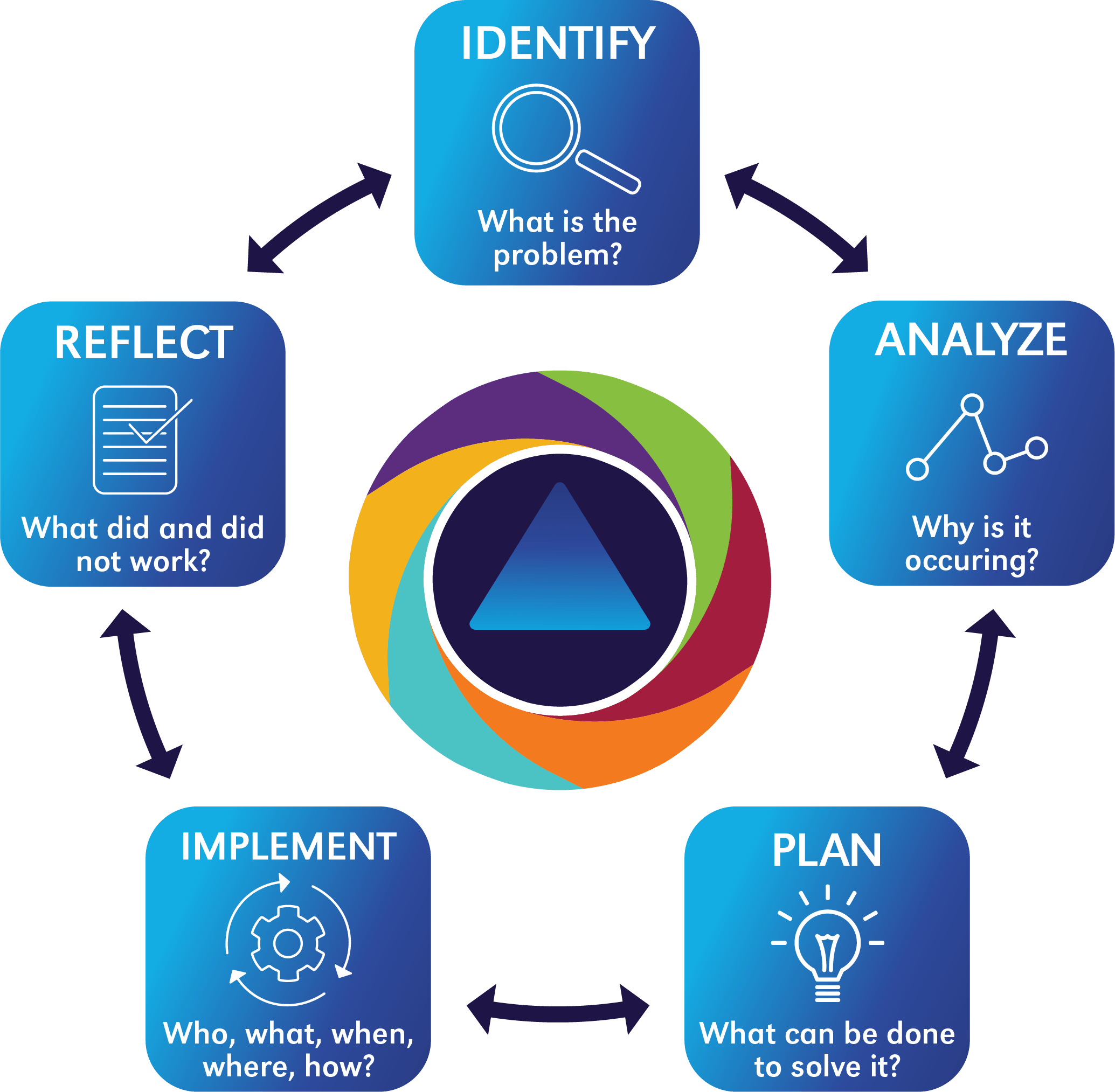Meeting the needs of every student requires understanding their learning journey, the root causes of challenges and how to provide appropriate support that addresses those root causes. Data-based decision-making involves collaboration and communication from community members and caregivers, as well as district, school, collaborative and student support teams, using a variety of data points to identify student needs and support planning.
Overview
Supporting effective data-based decision-making in NeMTSS requires attention to three components:
- Balanced assessment system to generate data
- Data-based decision-making to reinforce student support
- Data-based decision-making to support continuous improvement of the system
Balanced Assessment System: A balanced assessment system seeks to ensure valid and relevant data for decision-making. This system supports several categories of student and adult data to inform data-based decision-making: (1) student learning and well-being data, (2) demographic data, (3) perceptual data (student and adult), (4) process data – fidelity, needs assessment and gap analysis.
Data-Based Decision-Making: Teams engage in a problem-solving model to drive continuous improvement and make data-based decisions about student support. Students are not the subject of problem-solving — the supports that are provided to students are the focus of problem-solving.
Using the Problem-Solving Model: District and school teams engage in the problem-solving model to drive continuous improvement of the supports for the system. Collaborative Teams and Student Support Teams engage in the problem-solving model to identify, analyze, plan, implement and reflect on student supports.

Why it’s Essential
Data must guide decision-making at all support at the community, district, school, collaborative, and student levels to assist in improving the support provided to each student. In doing so, teams examine data using a consistent decision-making and problem-solving process to develop tailored solutions that will improve outcomes for all students.
Self-Assessment
The following Data-Based Decision-Making items are included on the NeMTSS Self-Assessment:
- Integrated data-based problem-solving for student academic, behavior and social-emotional outcomes occurs across content areas, grade levels and continuum of supports.
- NeMTSS leadership teams use student data and implementation data to evaluate instruction effectiveness.
- Pre-established decision-making guidelines are used to identify students who receive intervention support.
- Pre-established decision-making guidelines are used to evaluate effectiveness of interventions for individual students.
Related Resources
- Data Decision Rules
- NeMTSS Decision Making
- Examination of Systems-Level Data Within an MTSS Framework – PEER
- Five-Year Trend Data Chart (Excel)
- MTSS Percentage of Students Receiving Intervention Chart
- MTSS Risk Status Chart
- MTSS Data Summary Form
- MTSS Coaching Support Documentation (template)
- NWEA MAP® Report Tutorials
- PBIS Problem-Solving Card
- PBIS TIPS II Meeting Minutes Guide


